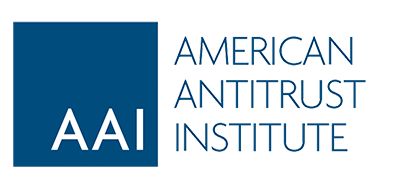AAI has filed an amicus brief in the Fifth Circuit seeking to overturn a district court decision stripping the FTC of substantive rulemaking authority to prevent unfair methods of competition under section 5(a) of the FTC Act. It also urges the court to reverse the district court’s order enjoining the FTC’s Non-Compete Clause Rule, which would declare most worker noncompetes unfair and make them subject to a cease-and-desist order.
In Ryan v. FTC, several plaintiffs and intervenors, led by the U.S. Chamber of Commerce, challenged the FTC’s authority to issue the Non-Compete Clause Rule and argued that the rule itself was arbitrary and capricious under the Administrative Procedures Act (APA). They argued that section 6(g) of the FTC Act, which gives the FTC power “to make rules and regulations for the purpose of carrying out the provisions of” the Act, should be read as giving the FTC authority to issue only procedural rules to carry out section 5(b), not substantive rules to carry out section 5(a).
The district court agreed, finding that section 6(g)’s lack of penalty provisions and its placement alongside the FTC’s authority to “classify corporations” supported the plaintiffs’ interpretation. It also held that the Rule was arbitrary and capricious because it banned nearly all worker noncompetes without sufficient justification.
AAI’s brief points out analytical errors in the district court’s interpretation. It explains that the text of section 6(g) must be read holistically and in context, consistent with the broader statutory design of the FTC Act. Unlike the Sherman Act, the FTC Act prevents conduct that harms competition in its incipiency and that does not require proof of actual or imminent anticompetitive effects, making the conduct well suited to ex ante rulemakings.
The brief explains that when incipient conduct is challenged in administrative proceedings, common law rules barring the conduct invariably emerge from case-by-case adjudications. APA rules—enforceable through the same preventative remedies used to enforce common law rules—are a more practical and sensible alternative when the FTC bars incipient conduct on a class-wide basis. Given the comparative efficiency of APA rules relative to common law rules, it is reasonable to believe Congress would have wanted the agency to deploy them where possible, albeit judiciously. The statutory design, the historical context, the comparative efficiencies, and the fact that the text of section 6(g) contains no scope-limiting adjectives all suggest section 6(g) should be read according to its plain meaning.
The brief also explains that noncompetes are well suited to rulemaking because they have anticompetitive tendencies in the aggregate, meaning aggregate evidence would otherwise be introduced in individual proceedings if non-competes were challenged as incipiency violations case-by-case. Considering the Agency’s examination of the economic evidence, its consideration of the business justifications for noncompetes and employers’ reliance interests, and its evaluation of alternatives, the Rule satisfies deferential arbitrary-and-capricious scrutiny under the APA.
The brief was written by AAI President Randy Stutz and AAI Senior Counsel David O. Fisher.
Read the full brief here: AAI Amicus Brief in Ryan v. FTC


